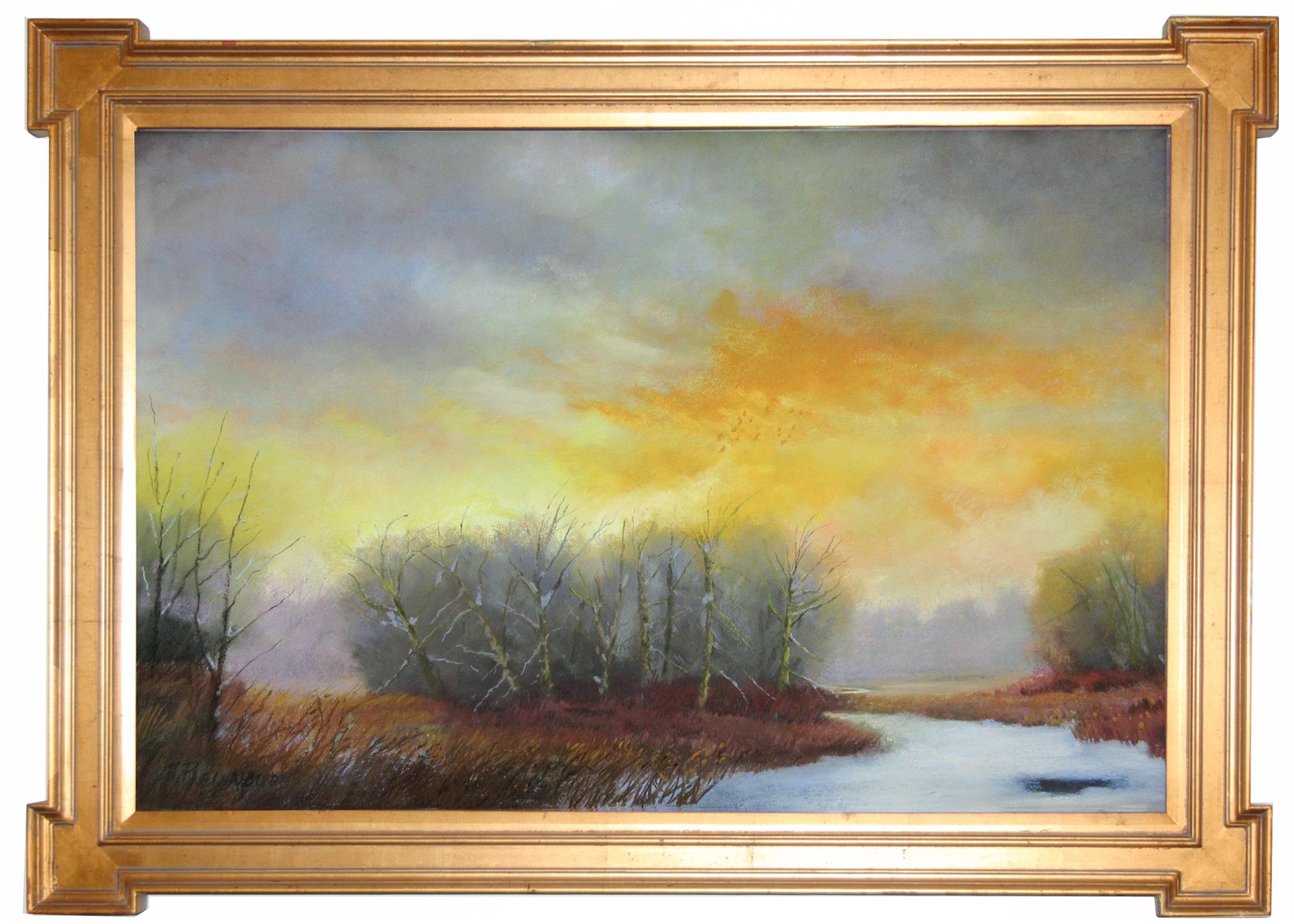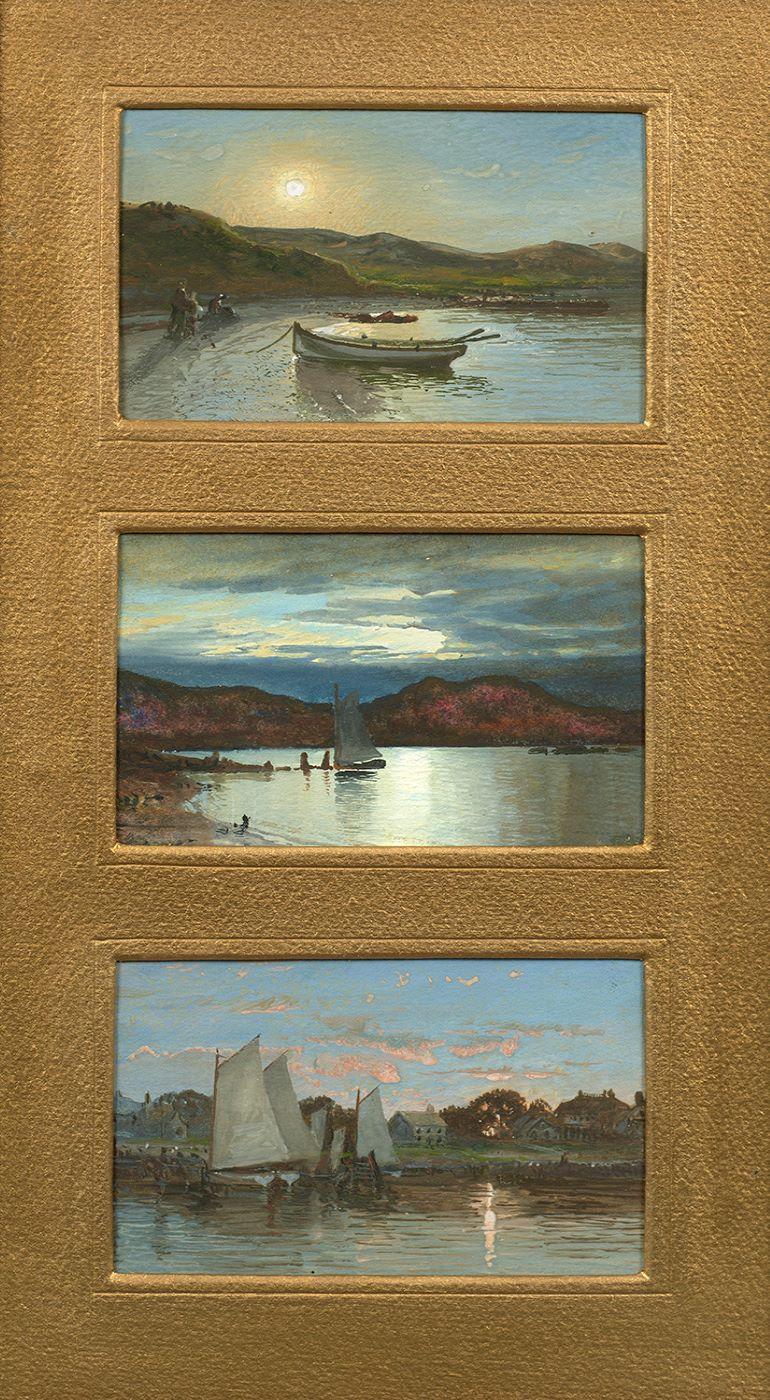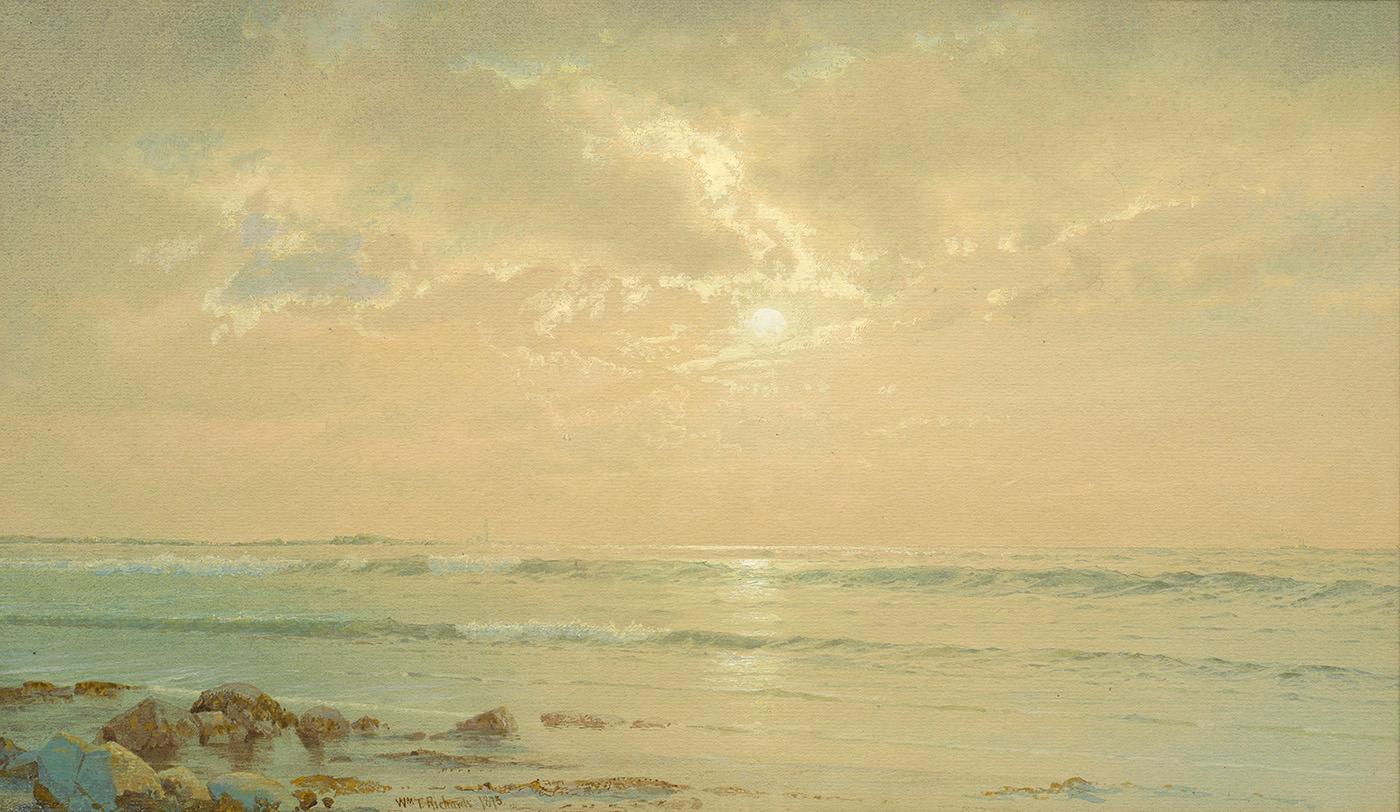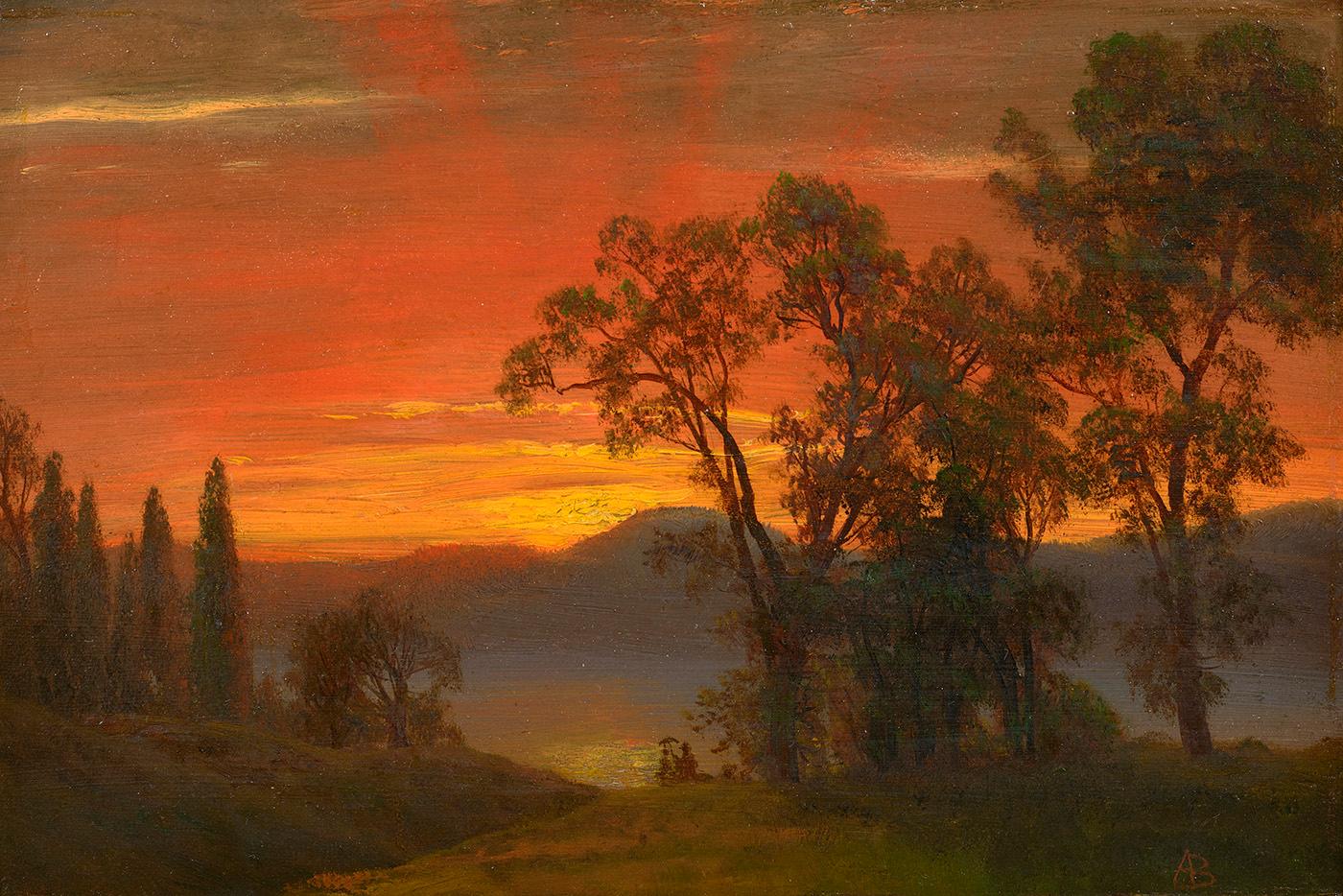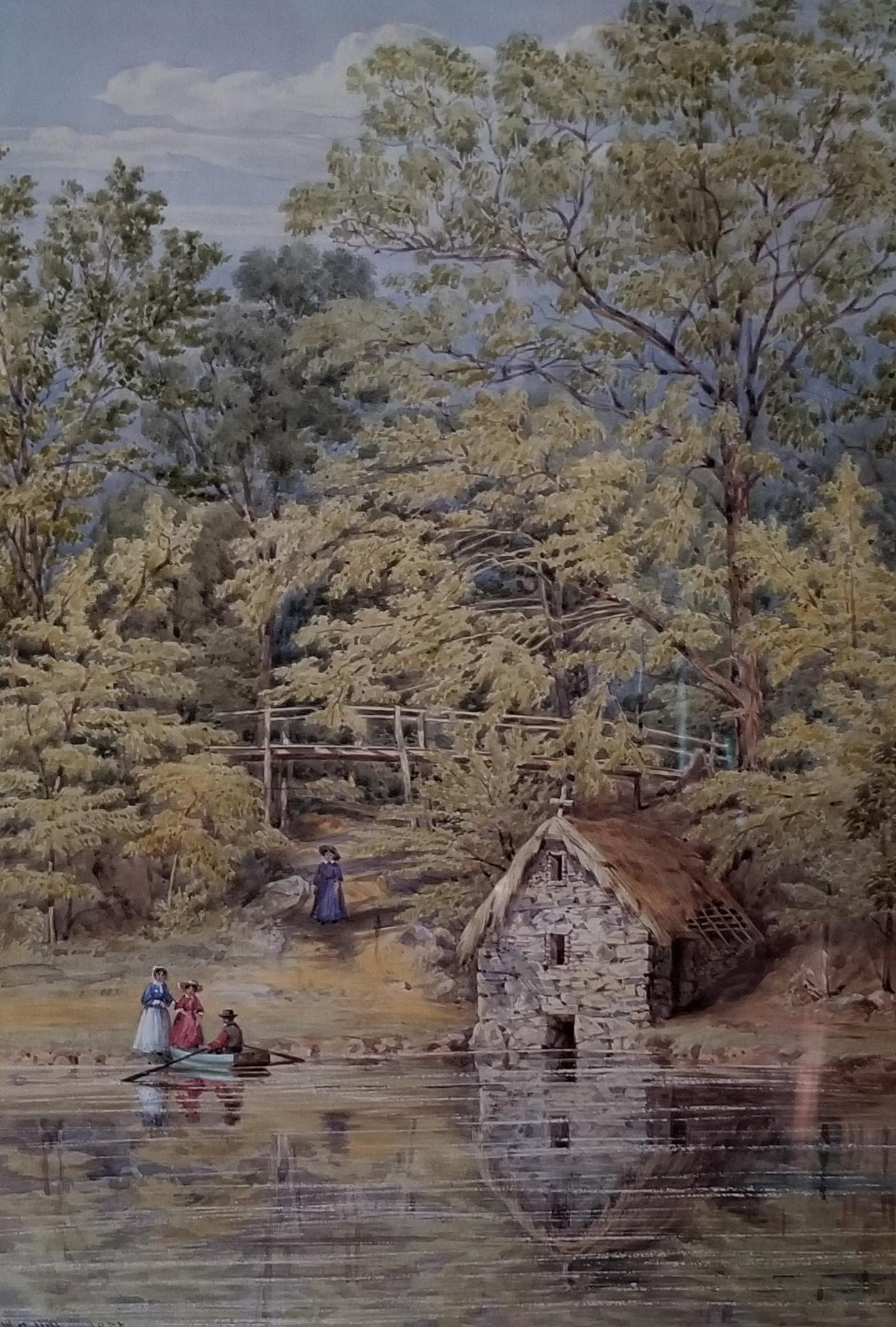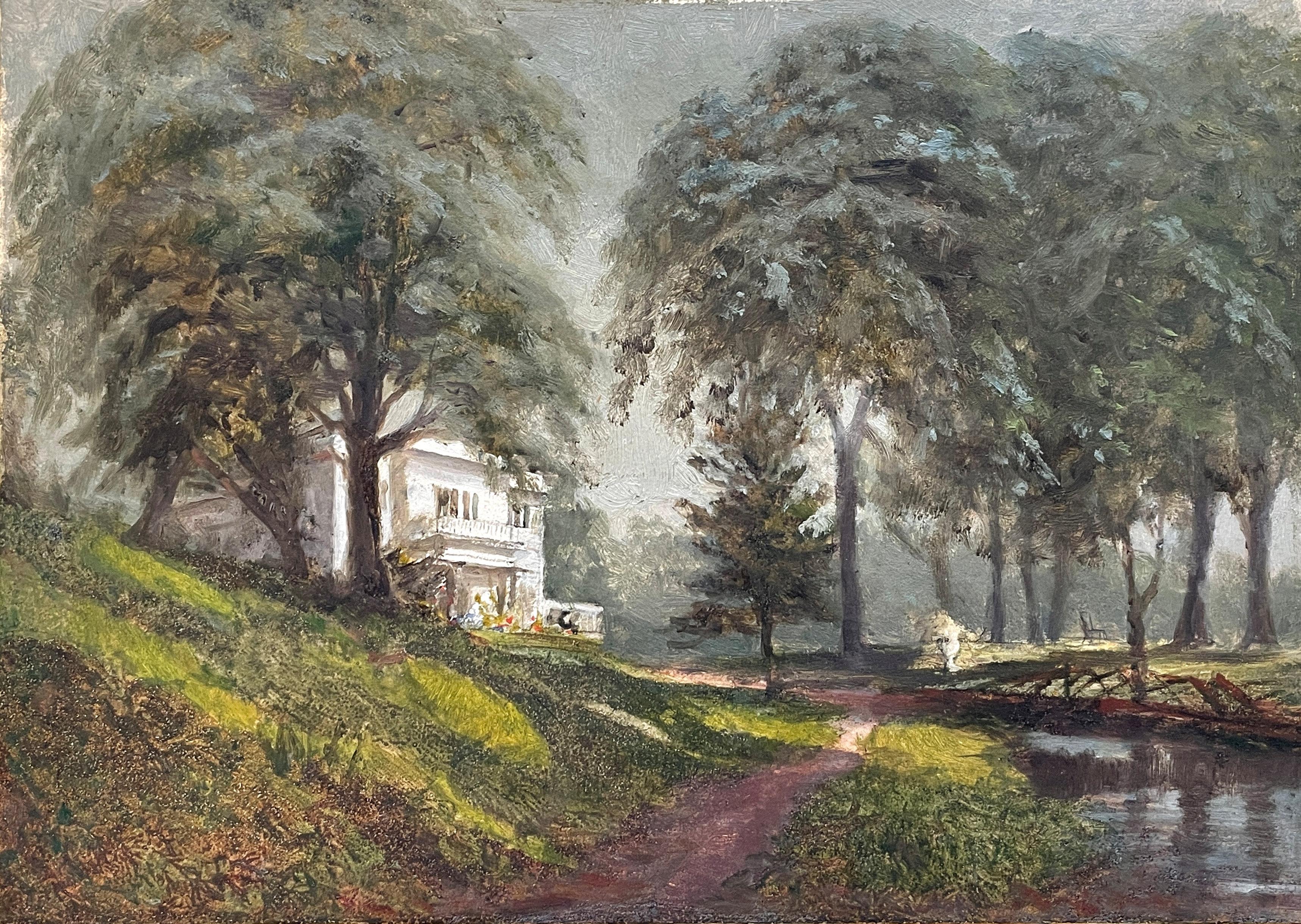Items Similar to Fly Fising in a Mountain Stream
Want more images or videos?
Request additional images or videos from the seller
1 of 3
Albert Nemethy Jr.Fly Fising in a Mountain Stream
About the Item
Signed lower right.
Albert Nemethy Jr. is part of a well known artistic family from the Catskill region of New York State. The father Albert Nemethy Sr. was know for painting paddle wheel boats on the Hudson River from a 19th century time period. Albert Nemethy Jr. took the tradition from his father but also expanded into landscapes in many different mediums.
- Creator:Albert Nemethy Jr. (1954, American)
- Dimensions:Height: 17 in (43.18 cm)Diameter: 23 in (58.42 cm)
- Medium:
- Movement & Style:
- Period:
- Condition:
- Gallery Location:Saratoga Springs, NY
- Reference Number:1stDibs: LU170211304352
About the Seller
4.2
Vetted Seller
These experienced sellers undergo a comprehensive evaluation by our team of in-house experts.
Established in 1992
1stDibs seller since 2015
30 sales on 1stDibs
Typical response time: 19 hours
- ShippingRetrieving quote...Ships From: Saratoga Springs, NY
- Return PolicyA return for this item may be initiated within 3 days of delivery.
More From This SellerView All
- Morrisinia, New York in the BronxBy William Rickarby MillerLocated in Saratoga Springs, NYSigned lower left, titled and dated Born in Staindrop, County Durham, England, he was a portrait and landscape painter, especially appreciated for watercolor painting, which he sold...Category
1850s Hudson River School Landscape Paintings
MaterialsPaper, Watercolor
- Blackberry picking near Church's Farm Hudson NYBy Arthur PartonLocated in Saratoga Springs, NYSigned lower left and dated 1863. Known as a Hudson River School painter, especially of mountain landscapes, Arthur Parton was well established in the New York art world where he exhibited at the National Academy of Design for more than half a century. He was born in Hudson, New York to a religious family supported by a cabinetmaker father. He enrolled in the Pennsylvania Academy of Fine Arts as a student of William Trost Richards, who remained a strong influence, and in 1862, his first exhibitions were in Philadelphia. In 1864, he moved to New York City where he exhibited regularly with the National Academy of Design excepting 1869 when he spent a year in Europe and was influenced by the Barbizon style of painting. In 1874, he and his wife moved into the Tenth Street Building in New York City, and he kept his studio there until 1893. In 1876, he gained much national notoriety at the Philadelphia Centennial Exposition for his paintings November, Loch Lomond and Solitude. He spent summers painting in the...Category
1860s Hudson River School Landscape Paintings
MaterialsBoard, Oil
- Sunrise on Lake George New YorkBy Samuel GriggsLocated in Saratoga Springs, NYSigned lower right Known as a painter of the White Mountains of New Hampshire, Samuel Griggs was listed as an architect in the Boston City directory from ...Category
Late 19th Century Hudson River School Landscape Paintings
MaterialsOil
- Indians in a LandscapeBy William Mason BrownLocated in Saratoga Springs, NYSigned lower left. Along with Martin Johnson Heade, William Mason Brown was among a very elite group of artists equally adept at landscape painting as well as still-life painting. H...Category
Late 19th Century Hudson River School Landscape Paintings
MaterialsCanvas, Oil
- California MillBy Hermann Ottomar HerzogLocated in Saratoga Springs, NYSigned & dated, lower left, 1869 Herman Ottomar Herzog was born in Bremen, Germany, on November 15, 1831. He studied art at the Dusseldorf Academy, starting in 1848, under several classical landscape painters. In 1855, Herzog made his first visit to Norway. The trip was a milestone in Herzog's career as it exposed him to the rugged landscape of the Norwegian wilderness and instilled in him a lifelong sense of nature that was to show in all his work. During the late 1850's and early 1860's, Herzog's fame spread throughout Europe. His paintings were collected for their dynamic realism and strong atmospheric effects. Among his patrons were several of Europe's royal families, including Queen Victoria of England and Grand Duke Alexander of Russia. He exhibited in the Paris Salon in 1863 and 1864, winning an Honorable Mention. While in Paris, it is thought that Herzog came into contact with the popular Barbizon School, whose adherents painted the grandeur and beauty of Nature in a romantic and realistic style. The effect of the Barbizon painters can also be seen in Herzog's poetic handling of mood and color. Although he was still in Europe, Herzog sent several paintings for exhibition at the Pennsylvania Academy from 1863 to 1869. He had several friends in the United States and they were developing a rather good demand for his work. It is not known exactly when Herzog decided to come to America. Sometime in the late 1860's he settled in Philadelphia. Besides wanting a developing market for his work, Herzog left Bremen due to rising political agitation by Prussia, which had just absorbed Bremen into its domain. In America, Herzog continued to paint his romantic landscapes, finding the American wilderness well suited to his style. In 1871, he traveled up the Hudson River on a painting tour. In 1873, he took his first trip west, going to Yosemite, then to Wyoming, Oregon, and along the West Coast to the Coronado Island, near the Mexican border. Herzog made several journeys west, finding each trip more fruitful than the last. He became known for his depictions of Yosemite, receiving great acclaim for a fine El Capitan, much in the style of his fellow countryman and painter Albert Bierstadt. His last trip west was in 1905, at the age of 74. In 1876, Herzog participated in the Centennial Exhibition in Philadelphia, showing a Norwegian scene and a Yosemite landscape...Category
1860s Hudson River School Landscape Paintings
MaterialsCanvas, Oil
- Fishing by the StreamLocated in Saratoga Springs, NYSigned lower rightCategory
1860s Hudson River School Landscape Paintings
MaterialsCanvas, Oil
You May Also Like
- Spring Thaw (Hudson River School Style Landscape Pastel Drawing, Gold Frame)By Judy ReynoldsLocated in Hudson, NYHudson River School inspired landscape in oil pastel of a countryside sunset "Spring Thaw" by Judy Reynolds 24 x 36 inches, 30 x 43 inches framed Signed, lower left This landscape ...Category
2010s Hudson River School Landscape Drawings and Watercolors
MaterialsPastel, Paper
- Study of Three Coastal ScenesBy William Trost RichardsLocated in New York, NYIn this unique work on paper titled “Study of Three Coastal Scenes,” William Trost Richard paints three separate studies of varied coastal scenes featuring boats.Category
Late 19th Century Hudson River School Landscape Paintings
MaterialsPaper, Gouache
- Moonlit SeascapeBy William Trost RichardsLocated in New York, NYSigned and dated lower left of center: WMT. Richards 1875Category
Late 19th Century Hudson River School Landscape Paintings
MaterialsPaper, Watercolor
- Sunset over the RiverBy Albert Bierstadt, 1830-1902Located in New York, NYMonogrammed lower right: ABCategory
Mid-19th Century Hudson River School Landscape Paintings
MaterialsPaper, Oil, Board
- "White House and Trees, " John Frederick Kensett, Hudson River School, New JerseyBy John Frederick KensettLocated in New York, NYJohn Frederick Kensett White House and Trees, circa 1853 Oil and gouache on paper 6 3/4 x 9 3/4 inches Provenance: Estate of Vincent Colyer (1824 - 1888) By descent Paul Magriel Collection Private Collection, Long Island Exhibited: New York, The Finch College Museum of Art; Southampton, New York, The Parrish Art Museum; New Orleans, Louisiana, Isaac Delgado Museum of Art; Norfolk, Virginia, Norfolk Museum of Art; Montclair, New Jersey, Montclair Art Museum; New London, Connecticut, Lyman Allyn Museum; Manchester, New Hampshire, The Currier Gallery of Art; Providence, Rhode Island, Rhode Island School of Design; Youngstown, Ohio, The Butler Institute of American Art, American Drawings (Benjamin West to the present) from the Paul Magriel Collection, June 1961 - December 1962. Portland, Oregon, Portland Art Museum, April 14 - May 15, 1963. Boston International Fine Art Show at the Cyclorama, Lincoln Glenn, October 19 - 23, 2022. In the 1850s through 1860, John Frederick Kensett, painted a series of at least five landscapes of the "Shrewsbury River" (now the Navesink River) along the New Jersey shore. Art historians have described Kensett’s paintings of the river as having evolved from a trip in the fall of 1853 at the invitation of Kensett's friend, author and lecturer George Curtis. However, letters viewable at the Smithsonian Archives of American Art website make it clear that Kensett had become acquainted with the area over a year earlier, most likely in connection with fellow artist and friend Thomas Prichard Rossiter. Kensett and Rossiter had been friends since at least the 1830s. As aspiring artists, they had traveled to Europe together in the 1840s. In 1851 Rossiter married Anna Ehrick Parmly, then in her early 20s, and Kensett attended the wedding. Anna was one of four daughters of Eleazer and Anna Maria Parmly. Eleazer, one of the major figures in American dentistry history, was a wealthy and accomplished member of New York society. When not in the city, the Parmly family gathered at Bingham Place, a sprawling estate on 275 pastoral acres spanning the peninsula between the Shrewsbury and Navesink Rivers along the New Jersey shore. The Bingham Place estate encompassed much of what is now Rumson, then known as Oceanic, N.J. It was a wide-open landscape of ocean views, orchards, lawns, and cattle-dotted pastures. There the Parmlys opened their doors to family, friends, and the summer breeze. Rossiter, newly-married into the Parmly family, was likely the reason that Kensett paid a social visit to Bingham Place in the summer of 1852. On July 11, 1852, having reluctantly departed, Kensett wrote Rossiter who was still at Bingham Place: New York to me now is that of a deserted place…marking a dismal contrast to the green lawns at Bingham Place. I saw the receding shores of Shrewsbury & the line of dust which marked your homeward course & finally the last glimpse of the Locust trees that shade the pleasant mansion & happy inmates at Bingham with any thing but a joyous spirit. A major figure in the American luminist tradition and one of the most renowned painters of the Civil War era, John Frederick Kensett was born in Cheshire, Connecticut, in 1816. He was the son of Thomas Kensett, a British immigrant engraver, and it was in his father's New Haven firm that Kensett first learned to draw. After mastering the rudiments of the graphic arts, he worked as an engraver in print shops in New Haven, Albany, and New York throughout the 1830's. During this period, he began to paint on his own, encouraged by a friend and fellow artist, John W. Casilear. In 1838, he made his first submission, a landscape, to the annual exhibitions of the National Academy of Design. Desirous of continuing his training, Kensett traveled to Europe in 1840. For the next seven years, often in the company of artists such as Casilear and Asher B...Category
1850s Hudson River School Landscape Paintings
MaterialsPaper, Oil
- Fairhaven Harbor (Old Tack Works Wharf)By William BradfordLocated in New York, NYSigned lower right: BradfordCategory
19th Century Hudson River School Landscape Paintings
MaterialsPaper, Oil, Board
Recently Viewed
View AllMore Ways To Browse
Father Time Vintage
Retro Mountain Art
Fly Art
Mountain River
Stream Landscape
Weller Hudson
Hudson Vintage
Landscape Of A Mountain River
Hudson River Art School
Vintage Flys
Hudson River School Of Art
Hudson River School New York
Vintage Paddling
Mountain Stream
Framed Hudson River School Landscapes
Albert Pastel
Catskills Landscape
Mountain Stream Painting
